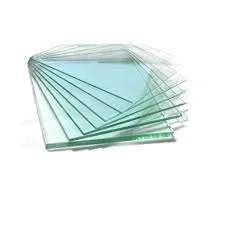The Plate Glass Manufacturing Industry
Plate glass, also known as flat glass, has become an essential component in various applications, including windows, doors, mirrors, and automotive glass. The production of plate glass involves several intricate processes, and numerous manufacturers around the globe specialize in this field. This article explores the plate glass manufacturing industry, its processes, advancements, and the significance of its products.
Understanding Plate Glass
Plate glass is typically defined as flat glass that is produced using a process involving melting raw materials, forming the glass into flat sheets, and then cooling it down through controlled methods. The most common applications for plate glass include residential and commercial buildings, where it is used for windows and facades, as well as in the automotive industry for windshields and windows.
Manufacturing Process
The manufacturing of plate glass generally involves several critical steps. First, the raw materials are gathered, which primarily include silica sand, soda ash, and limestone. These components are melted together in a furnace at high temperatures, usually ranging from 1,450 to 2,500 degrees Fahrenheit. This fusion process results in molten glass.
Once the glass has melted, it is formed into flat sheets through various methods, the most prevalent being the float glass process. In this process, the molten glass is poured onto a bed of molten tin, which provides a smooth surface and allows the glass to spread out uniformly. After the glass has reached the desired thickness, it is carefully cooled and annealed to relieve internal stresses. The final step involves cutting the glass into specific dimensions, after which it may undergo further processing, such as polishing or coating.
Technological Advancements
plate glass manufacturers
In recent years, the plate glass manufacturing industry has seen substantial technological advancements that have improved efficiency, product quality, and sustainability. Modern manufacturing facilities are increasingly equipped with automated systems that enhance precision in cutting and handling glass, reducing waste and improving safety. Additionally, innovations in energy-efficient furnaces and recycling processes have made it possible for manufacturers to minimize their carbon footprint.
One of the most significant advancements is the development of smart glass technologies that respond to environmental changes, such as temperature and light. This has enormous implications for energy efficiency in buildings and vehicles, allowing for better control of heating and cooling and thus reducing energy consumption.
Sustainability in Plate Glass Manufacturing
Sustainability has become a critical focal point for plate glass manufacturers. As the world shifts toward more eco-friendly practices, glass manufacturers are adopting recycling initiatives. Glass is one of the most recyclable materials, and many companies now use a significant percentage of recycled glass (cullet) in their production processes. This not only reduces the demand for raw materials but also lowers energy consumption and greenhouse gas emissions.
In addition, manufacturers are exploring alternative materials and methods that reduce the environmental impact of their operations. For instance, investments in solar energy for powering manufacturing plants have gained traction, contributing to sustainable practices.
Conclusion
The plate glass manufacturing industry plays a pivotal role in modern architecture and design, impacting our everyday lives in numerous ways. As manufacturers continue to embrace technological innovations and sustainable practices, the future looks promising. With an increasing focus on eco-friendly solutions and improved production methods, the plate glass industry is poised to meet the growing demands of consumers while contributing to a more sustainable future. Ultimately, the significance of plate glass extends beyond its physical attributes, reflecting the intersection of technology, art, and responsibility in our built environment.
 Afrikaans
Afrikaans  Albanian
Albanian  Amharic
Amharic  Arabic
Arabic  Armenian
Armenian  Azerbaijani
Azerbaijani  Basque
Basque  Belarusian
Belarusian  Bengali
Bengali  Bosnian
Bosnian  Bulgarian
Bulgarian  Catalan
Catalan  Cebuano
Cebuano  Corsican
Corsican  Croatian
Croatian  Czech
Czech  Danish
Danish  Dutch
Dutch  English
English  Esperanto
Esperanto  Estonian
Estonian  Finnish
Finnish  French
French  Frisian
Frisian  Galician
Galician  Georgian
Georgian  German
German  Greek
Greek  Gujarati
Gujarati  Haitian Creole
Haitian Creole  hausa
hausa  hawaiian
hawaiian  Hebrew
Hebrew  Hindi
Hindi  Miao
Miao  Hungarian
Hungarian  Icelandic
Icelandic  igbo
igbo  Indonesian
Indonesian  irish
irish  Italian
Italian  Japanese
Japanese  Javanese
Javanese  Kannada
Kannada  kazakh
kazakh  Khmer
Khmer  Rwandese
Rwandese  Korean
Korean  Kurdish
Kurdish  Kyrgyz
Kyrgyz  Lao
Lao  Latin
Latin  Latvian
Latvian  Lithuanian
Lithuanian  Luxembourgish
Luxembourgish  Macedonian
Macedonian  Malgashi
Malgashi  Malay
Malay  Malayalam
Malayalam  Maltese
Maltese  Maori
Maori  Marathi
Marathi  Mongolian
Mongolian  Myanmar
Myanmar  Nepali
Nepali  Norwegian
Norwegian  Norwegian
Norwegian  Occitan
Occitan  Pashto
Pashto  Persian
Persian  Polish
Polish  Portuguese
Portuguese  Punjabi
Punjabi  Romanian
Romanian  Russian
Russian  Samoan
Samoan  Scottish Gaelic
Scottish Gaelic  Serbian
Serbian  Sesotho
Sesotho  Shona
Shona  Sindhi
Sindhi  Sinhala
Sinhala  Slovak
Slovak  Slovenian
Slovenian  Somali
Somali  Spanish
Spanish  Sundanese
Sundanese  Swahili
Swahili  Swedish
Swedish  Tagalog
Tagalog  Tajik
Tajik  Tamil
Tamil  Tatar
Tatar  Telugu
Telugu  Thai
Thai  Turkish
Turkish  Turkmen
Turkmen  Ukrainian
Ukrainian  Urdu
Urdu  Uighur
Uighur  Uzbek
Uzbek  Vietnamese
Vietnamese  Welsh
Welsh  Bantu
Bantu  Yiddish
Yiddish  Yoruba
Yoruba  Zulu
Zulu 

